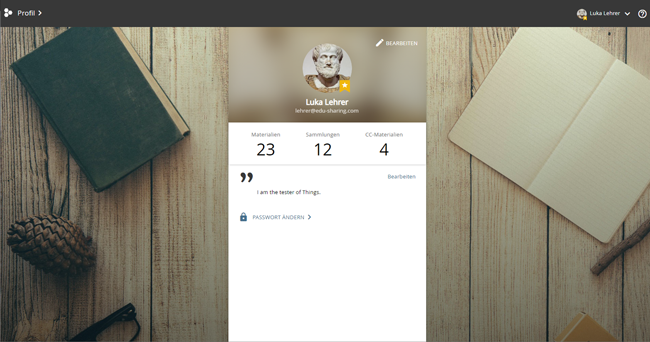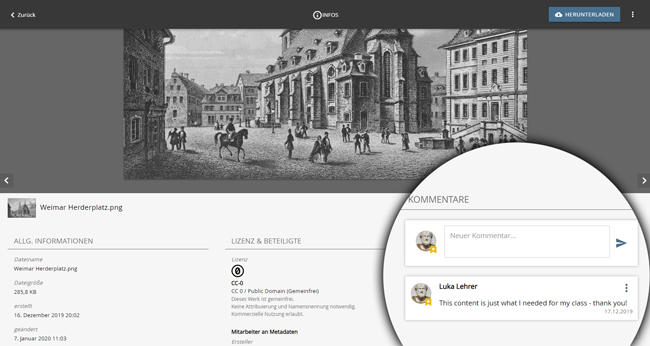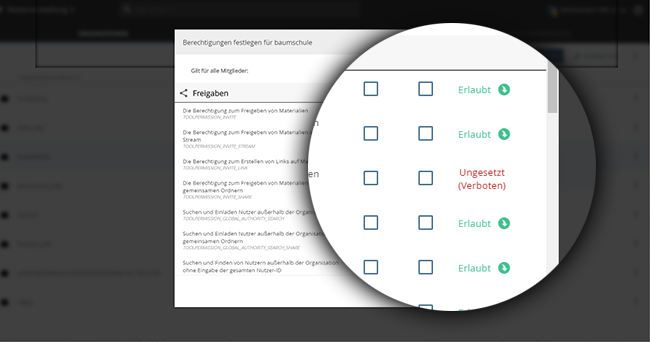
edu-sharing 4.2 stable released
16. July 2019User experience designer and product manager (m/w) DE
23. February 2021Features

User Profiles & Stream
In edu-sharing 5.0 every user gets their own profile page. On this page he can introduce himself, enter a description for other users and view statistics. In addition, each user can also store a custom profile picture. The profile pictures will also be displayed if this user is later invited to a material.
The new function "Stream" has been prepared, which in future will offer course groups or individuals learning content in the recommended order. Interested beta users should contact the development team to activate the function.
Comments
Users now have the opportunity to attach comments to materials in order to discuss content or suggest improvements. Due to the new user profiles, each user icon is displayed with the commentary. The number of comments is displayed directly on the material.
Administrators can configure permission to comment for individual groups, users or even per element.


Managing Permissions
Administrators can now manage the rights for individual organizations, groups or users in a special administration interface. This includes, for example, the rights to publish materials, attach licenses, give comment, use tools, etc.
The rights management also offers the possibility to display the current rights status for groups or individual users. This way it can be determined not only whether a user has a certain right, but also from which group this right stems.
Simple export of metadata
Administrators now have the possibility to export the metadata of any search. The administrator can decide which metadata should be exported. The format can be either CSV (table structure) or JSON.
With the help of these features an overview of all created media or collections of a user can be generated.


Under the hood
With edu-sharing 5.0, we are upgrading the underlying Alfresco CMS to version 5.2, which includes numerous bug fixes, performance improvements and better support for current versions of other systems, such as the database and search engines.
Access to content that has been shared by a user has also been optimized. There is now no longer a limit to the number of users.
The performance of the system has been significantly improved in many areas, for example, when accessing folders, searching or even editing objects.
